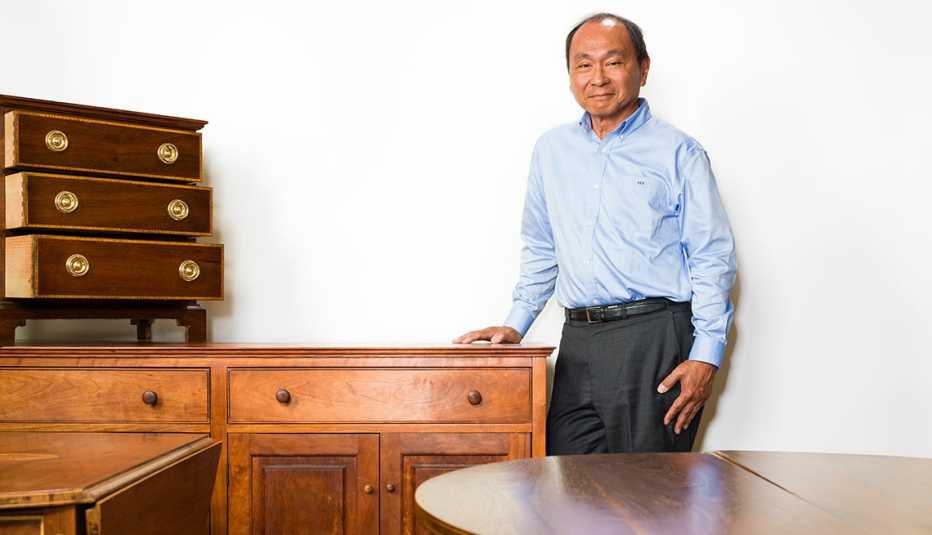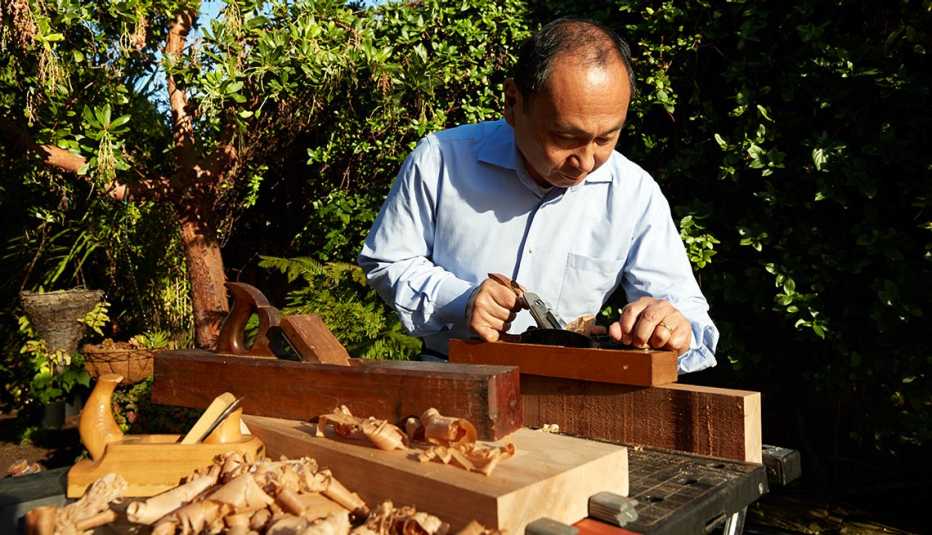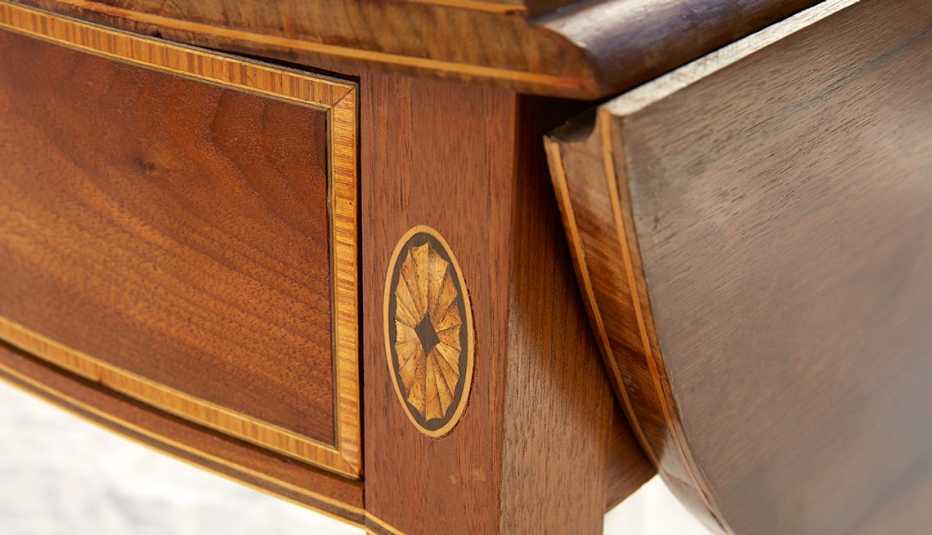AARP Hearing Center


Around the time the Berlin Wall fell in 1989, I worked at the State Department. Every time I visited the secretary of state's office, I looked at the antique Federal-style furniture and thought, "This is so beautiful." I knew I could never afford anything like that, but I like doing things with my hands, so I started to teach myself how to build furniture. Eventually I got to the point where I felt I could make reproductions of some of the Federal pieces. I relied on instructional books and videos. My most ambitious project was a pair of Pembroke drop-leaf tables with banding and inlays.
I was kind of exhausted by those tables, though. It had taken 10 years to achieve my goal of making fine Federal-style furniture, and my wife and kids weren't happy that I took up the whole basement all that time. So I stopped for about 15 years. I sold all of my big power tools — but kept my collection of hand tools. The ones I like the best are Japanese. During the Depression, my grandfather had a hardware store in Los Angeles, and he secretly squandered all the family's money buying samurai swords. Nobody found out until he passed away in the 1970s. I still have one of the swords, and I marvel at how layers upon layers of steel were pounded together to create an incredibly sharp edge. The technology in my Japanese chisels and planes is exactly the same.


Now my kids are grown, and my wife and I live in a new place near Stanford University, where I teach political science. Recently, I set up a shop in our garage, brought out all the old hand tools and built a table modeled after the work of the 20th-century designer-craftsman George Nakashima. Next, I want to make a Windsor chair in the style of the Maine craftsman Thomas Moser. Because what I do for a living is so abstract, it's really satisfying to create something tangible. Hand planing a surface to a mirrorlike finish requires putting an edge sharper than a razor on a blade. It is a skill that I have yet to master and leaves me with a big objective still to accomplish in life.
Francis Fukuyama, 63, wrote The End of History and the Last Man. His most recent book is Political Order and Political Decay.


































































More on Home and Family
Help Your Adult Children With Career Decisions
The goal is to choose work they love